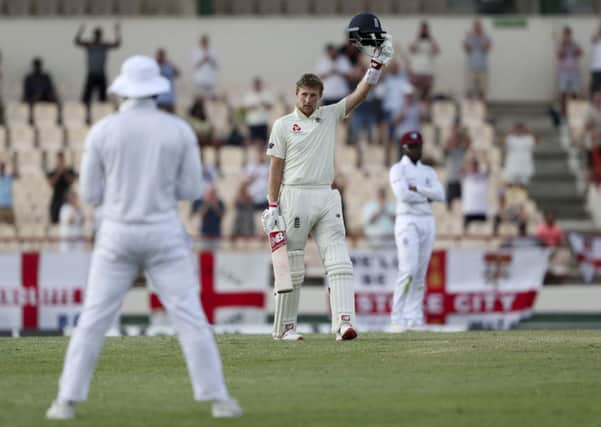Chris Waters: It’s time to cut down the noise, not turn up the mics


In the stadiums, the likes of England’s Barmy Army create their wearisome, self-important racket.
In the commentary boxes, where there are more ex-pros than in the average Former Players’ Association, the lack of broadcasting talent is astonishing at times as they babble away incessantly, unchecked by any notion of editorial control.
Advertisement
Hide AdAdvertisement
Hide AdAnd, out on the pitches, games proceed to a soundtrack of inanities as players exhort each other along the lines of “Good areas, Jimmy,” and “Got him worried now, Broady lad, got him worried” to the extent that such witless encouragement ceases to have meaning.
And that is before we even consider the forced razzmatazz of T20 and the endless “Hi ho” jingles that emanate from the PA, along with such entreaties as “Boom boom boom everybody say wayo – wayo”.
For my part, I say “boom boom boom enough is enough”, which is why, in light of the Shannon Gabriel/Joe Root incident in St Lucia, I question why we need yet more noise in the game by having stump microphones.
Granted, the chief issue in this particular case is the alleged homophobic element to which Root reacted so calmly and with a statesmanship befitting an England captain, but there is also a wider point to be made about stump microphones themselves.
Advertisement
Hide AdAdvertisement
Hide AdAs genuinely funny banter has steadily disappeared from a sport that has become increasingly cut-throat and not given to idle persiflage, their chief function would seem to be to broadcast the type of witless encouragement previously adduced, which most of us, I imagine, could do without.
So, why have them?
According to Dave Richardson, chief executive of the International Cricket Council, which last summer ordered that the stump microphones be turned up, not down, it is to promote improved player behaviour which, as you might have noticed, has gone downhill.
The thinking – no doubt of the “blue sky” or “out-of-the-box” variety – is that if the stump microphones are turned up, then players will think twice before saying things that they do not want to be heard by the general public/children who worship the ground on which they walk.
It is an attempt to stamp out sledging, the ugly send-offs that bowlers give batsmen, and to ensure that there are reputational consequences for miscreants as well as any financial/cricketing ones.
Advertisement
Hide AdAdvertisement
Hide AdIn that respect, we can all applaud the good intentions of Richardson et al for trying to tackle a problem that has been allowed to spiral out of control by the ICC themselves, one that captains, coaches, umpires and the like have not been strong enough to tackle either.
But, as TS Eliot once observed, “most of the evil in this world is done by people with good intentions”, and well-meant decisions taken in distant committee rooms are not always compatible with the white-heat reality of competitive sport.
Clearly, sport is a hugely emotional and emulous arena, one in which human beings are prone to acting in human ways.
Sportsmen are not always rational in the midst of fierce combat and nor should we expect them to be; the fast bowler who has just had a catch dropped, for instance, after a wicketless day in 30 degree heat, might not remember the wide-eyed child watching at home on television when he instinctively reacts with a swear word or several.
Advertisement
Hide AdAdvertisement
Hide AdGranted, the Gabriel/Root case is a different matter entirely and not something to be trivialised, but while condemning bad behaviour on the field in general, we must not lose sight of the human element of sport and, let us be frank, the not always Mensa-esque character of its participants.
As far as I know, cricket proceeded perfectly well for many years, thank you very much, without recourse to stump microphones, and it is effective administration, umpiring and team management that is required to tackle the problem of sledging and so on.
The umpires, in fact, need to get much tougher and better control the playing space, as well as speed things up like over-rates, which are an insult to the paying public. It might be asked, indeed, what international umpires do nowadays. After all, their decisions are routinely referred to technology and overturned by it, and barely a dismissal passes without checking whether the umpire failed to spot a no-ball, something which turns out to happen so frequently that one can only wonder how many no-balls per game go unpunished.
Amid the hullaballoo of modern cricket, it is not yet more noise that is needed and the voyeuristic intrusion of stump microphones, but greater commonsense and competence right across the board.